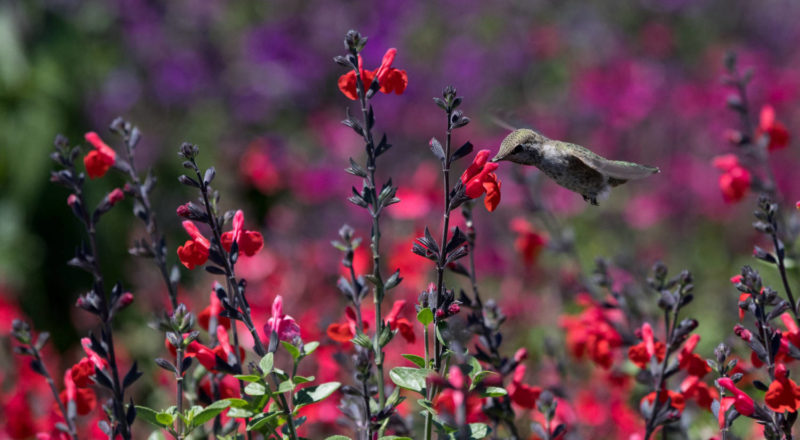
A Salvia Showdown
Wow, there are a lot of salvia varieties! This factor was one of our main motivations in choosing salvia for our yearly comparison trial where we feature a single genus. It is a top-selling genus for us, and we promoted it as one of the nine focus crops in our grower solutions program, Planthology. And we went BIG, choosing over 100 varieties to trial!
With the 2021 CAST event in June this year, we knew it would be the perfect time to showcase this huge genus. It gave us an opportunity to expand our own growing experience, allowing us to learn more about the products we offer and provide better growing information as well as variety suggestions to our customers. Their success is our success and that is our main goal — to provide quality products and thorough information to our customers that, in turn, can lead to increased sales at retail.
TRIAL DETAILS
Salvia was a big trial to take on; with so many varieties currently on the market we had to make tough choices on which ones to choose. We wanted and tried to get our hands on all of them and ended up trialing over 112 varieties out of the hundreds available.
After choosing our lineup, we had to set the stage for a week 25 target date for blooms. We chose week 10 as our potting date to have enough time to build a nice base and allow for a trim before we let them go to flower. The trial was planted in 8-inch pots, with three liners per pot. We were able to plant the majority of varieties in week 10; however, because of supply chain issues some were planted as late as week 14. The late plantings were a cause for concern because Watsonville can have cooler temperatures creating longer crop times than expected, but we got lucky and had some warmer spells early in the season. The material planted week 14 actually timed out better for a week 25 show versus the week 10 planted material.
After potting the liners, we placed the 8-inch pots in a production field with overhead irrigation to give them similar conditions to what would be seen at most growing facilities. Occasionally, things got a bit dry in the field; despite this, most varieties were tough enough to push through this stress test, but some of the taller and more brittle varieties did have some breakage and splitting. For a summarized list of varieties, final sizes, flowering times and more, click here.
Salvia is a diverse genus, bringing a variety of flower colors, habits and hardiness to any perennial assortment. To help organize the trial, we focused on vegetative varieties best for perennial programs and have divided the genus into three categories: tender perennial types, woody stem types and hardy perennial types.
TENDER PERENNIAL SALVIA
Tender perennial types of salvia are typically only hardy in southern areas of the country. These salvias have tropical bloodlines and boast big, bold, beautiful flowers and because of their fast growth, they still work great as summer annuals in areas where they are not hardy. Species included in this category include guaranitica, splendens and several hybrids.
All the tender varieties were colorful and definitely big. The main takeaway here is to make sure to give these varieties plenty of space and room to grow, especially in a pot; probably a little PGR would be in order as well. These were all very tall and often would fall over in the wind; of course we were growing them to maturity, which is unlikely to happen when growing them for retail sales.
‘Black & Blue’, while an older variety, looked very nice when in bloom and still had the bluest flowers in this group. However, it did have issues with yellowing foliage throughout the growing cycle. ‘Amistad’ is also holding strong as a great variety with deep green foliage and purple flowers with a black calyx; the habit is a bit aggressive, though. A favorite in this category is the sister to ‘Amistad’, ‘Amante’ with deep fuchsia flowers on a green/black calyx, which is a new and unique color in the guarantica lineup.
‘Black & Blue’, while an older variety, looked very nice when in bloom and still had the bluest flowers in this group. However, it did have issues with yellowing foliage throughout the growing cycle. ‘Amistad’ is also holding strong as a great variety with deep green foliage and purple flowers with a black calyx; the habit is a bit aggressive, though. A favorite in this category is the sister to ‘Amistad’, ‘Amante’ with deep fuchsia flowers on a green/black calyx, which is a new and unique color in the guarantica lineup.
For growers looking for a slightly less aggressive guarantica hybrid, ‘Bodacious Rhythm & Blues’ is a bit bluer colored over ‘Amistad’ and slightly smaller in habit. The Wish series is a completely different species from the guarantica types; these are fast growing and large plants. We found ‘Love & Wishes’ to be the best behaved in a pot.
'Love & Wishes'
'Killer Cranberry' and 'Amistad'
WOODY STEM SALVIA
Woody stem types of salvia are classified as shrubs and subshrubs in warmer climates, as they never die back and form a woody base. These are generally hardier than the tender perennial types but still not hardy in all areas of the country. Species in this category are: greggii, microphylla, jamensis, leucantha and various crosses of these species.
On these types of salvia, we often hear breeders talk about improved stem flexibility and less breakage at shipping. What we found is all woody stem varieties were brittle to some degree; in fact, they were hard to move around without breaking some piece off the plant. Again, this could be because plants were very mature in the pots, which we would not see at retail.
Of all the woody varieties tested, we did find one that truly lived up to the hype of being flexible: ‘Killer Cranberry’ in the Sunset Plant Collection. The Mirage series also really stood out, first because there are so many colors and, second, the habit was very rounded and mounded, and for the most part it is a very uniform series. We really enjoyed the new ‘Mirage Rose Bicolor’, definitely a unique color in this class of salvia. We also found the Cherry Red, White and Blue to be great matches — perhaps something to think about for a Fourth of July holiday program?
As far as colors were concerned in the woody types, there was a wide range, but only a few stood out from the rest. ‘Pink Pong’ is a bright, almost neon pink, and what really made this one stand out was the sheer size of the flowers — they are massive! Each spike was between 8 and 10 inches tall; the habit is also on the larger size, so give this one some breathing room!
On the purple-blue side of things, there were several in the color range, but we thought ‘Vibe Ignition Purple’ won best in class with the finest habit of them all. ‘So Cool Pale Blue’ was another color standout with a light lavender color versus blue as the name suggests. This one stood out to our visitors as well; we observed several people walking over and looking at the plants, perhaps because it is a more toned-down color yet still vibrant.
Red is another color description often used to describe flower color, but in reality the blooms are more of a red tone not actually red. Few flowers are a true red, ‘Royal Bumble’ being one of them. It was a true standout, we think the dark stems and calyx made the flowers really stand out against the competition.
Let’s talk bicolors! More specifically the ‘Hot Lips’ types. We trialed the original, ‘Hot Lips’, along with ‘Amethyst Lips’ and ‘Cherry Lips’ — the latter two are newer varieties in the bicolor range. Many in the industry already know this, but the flowers on these types are not always bicolor; these are the chameleons of the salvia world. ‘Hot Lips’, for instance, can be all red or all white flowers, and sometimes both types on the same plant. This color-changing effect is thought to be a reaction to temperature, so if you think you have the wrong variety because it is solid in color, give it some time and it will go back to bicolor eventually.
On the newer varieties, these did not show their bicolor flowers during the trial while ‘Hot Lips’ did. We have seen them before, so it appears the triggers to produce bicolor flowers are a bit different for Amethyst and Cherry.
'Mirage Rose Bicolor'
'Vibe Ignition Purple'
'So Cool Pale Blue'
'Royal Bumble'
HARDY PERENNIAL SALVIA
Our last category is hardy perennial types. These are generally hardy throughout most of the U.S.; they have a rosette, clumping growth habit and die back in the winter in most places or can be cut back. Species included in this category are: nemorosa, pratensis and nemorosa crosses including x sylvestris.
What surprised us the most about this category was all of the varieties bloomed on time, and they had loads of flowers. Of course, we did plant three liners per pot so that helped with bulking! The Fashionista series is one that we strongly suggest planting in the fall for a bulkier habit and better bloom response. While we did get blooms, they were more sparse than other series and later to bloom, most likely because of their pratensis blood.
In the nemorosa world there are so many varieties, we were going a bit cross-eyed, many looking very similar with a few standouts. First, we noticed there were several larger varieties that looked very similar to the old standby, ‘May Night’, albeit easier to propagate with a better bloom count. These included ‘April Night’, ‘Blue By You’ and ‘Spring King’.
On the compact side of things, there are several varieties 10 inches or shorter; our personal preference is to stay around 10 inches and not much shorter, as the very compact varieties were not as showy. Right at 10 inches tall, our favorite was ‘Sensation Compact Deep Blue’, which was compact yet very full in habit bringing us the best of both worlds.
As far as series go, there are so many! The most uniform in our trial was the new Apex series from Danziger and Midnight series from Dümmen Orange. The Midnight series has nice dark stems for some added richness. The Marvel series from Darwin is still a top pick as the flowers are the largest, and by large we don’t mean tall; the individual flowers are very large, and attention grabbing for sure.
'Blue By You'
'Sensation Compact Deep Blue'
'Apex White'
'Marvel Rose'
TOP PICKS
We really enjoyed this trial and hope you find the highlights both interesting and useful. It was truly remarkable seeing so many different flower colors as well as all the hummingbirds and bees that made regular visits. One question that keeps being asked: What was your top pick? So hard to pick just one!
So, we picked two. The first was ‘Dark Matter’, a nemorosa was ‘Dark Matter’, a nemorosa hybrid from Danziger. Every time we looked at the trial, this one really stood out with its dark and rich coloring in a sea of purple. The second was ‘Hummingbird Falls’ by PlantHaven. We chose this one because of the unique trailing habit, intended to be used in hanging baskets. What we also liked was the marketing campaign for this one: “Nature’s hummingbird feeder!” What is interesting is how many homeowners really do not use plants to attract hummingbirds but instead use colored sugar water — let’s hope this new variety starts the next trend!
'Dark Matter'
'Hummingbird Falls'

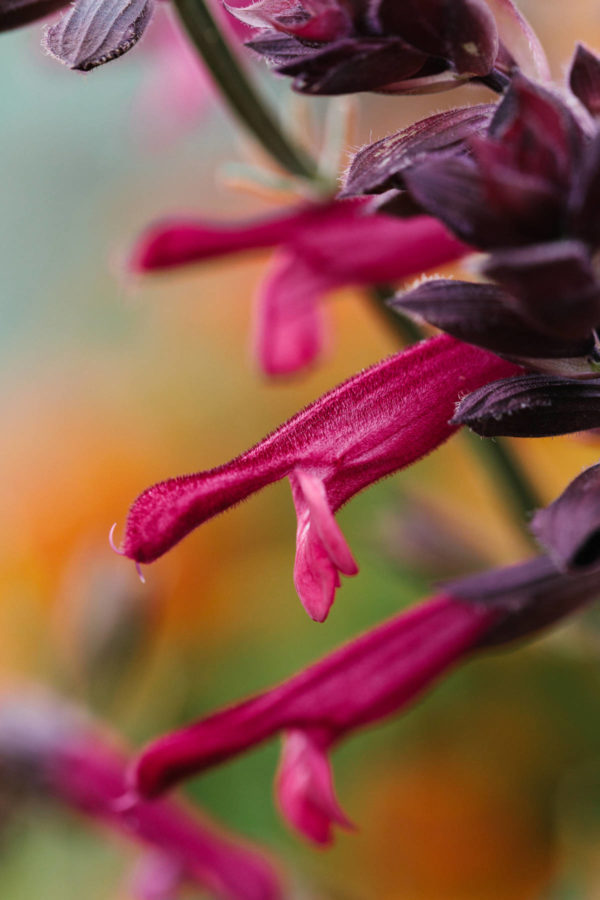
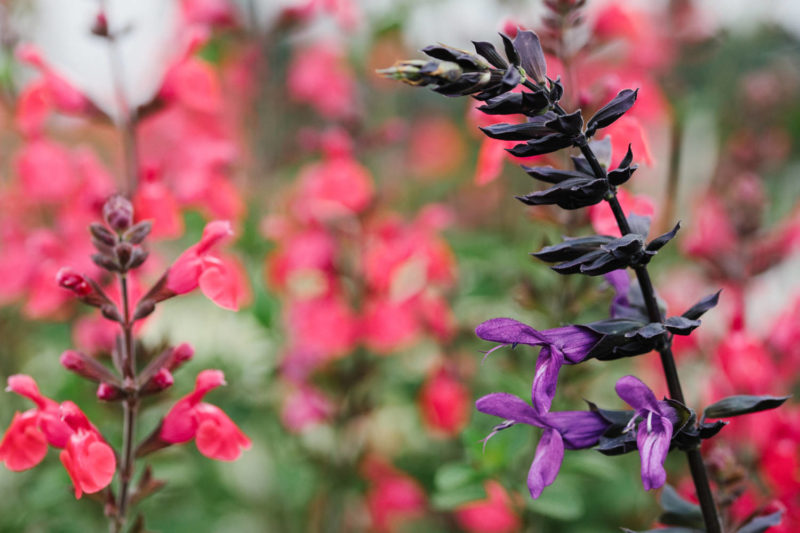
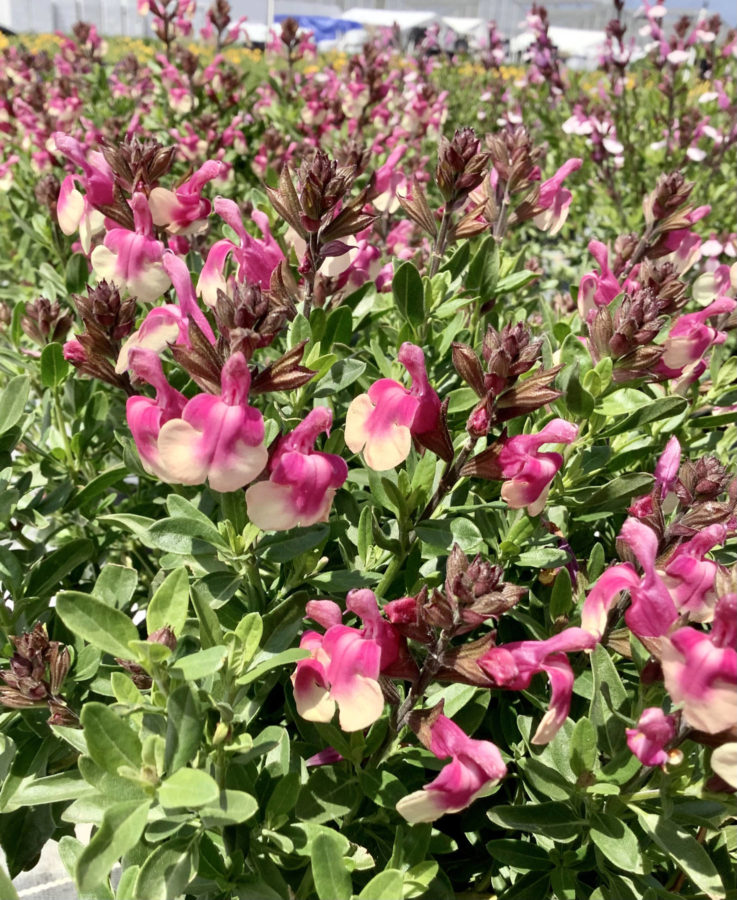
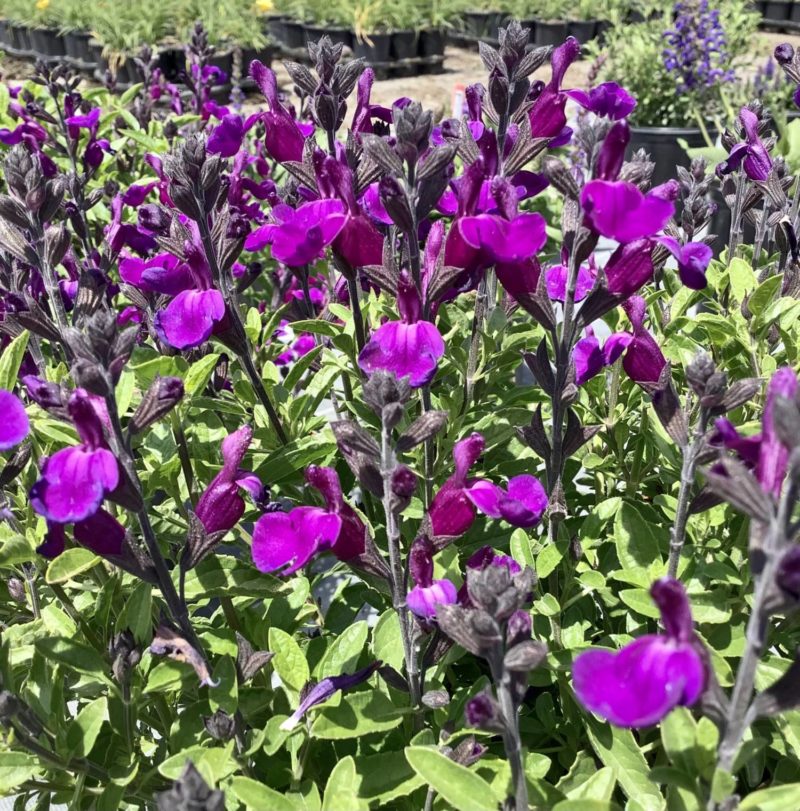
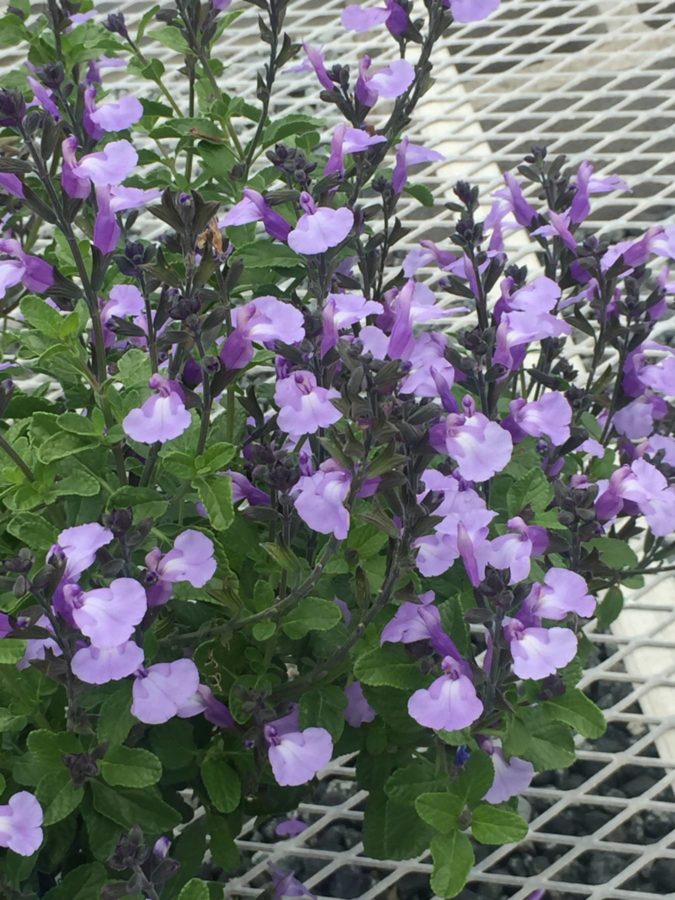


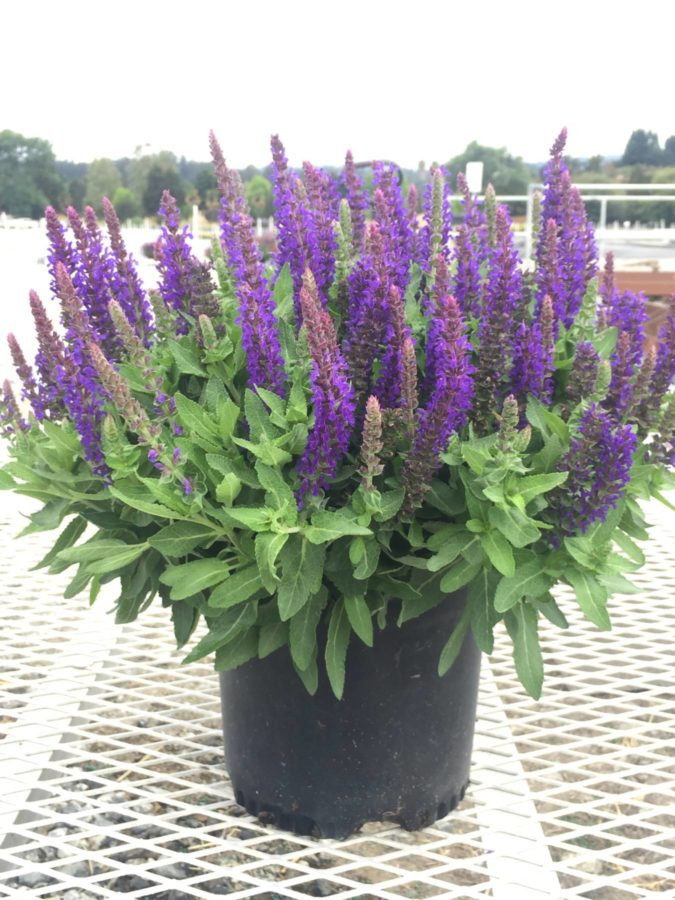
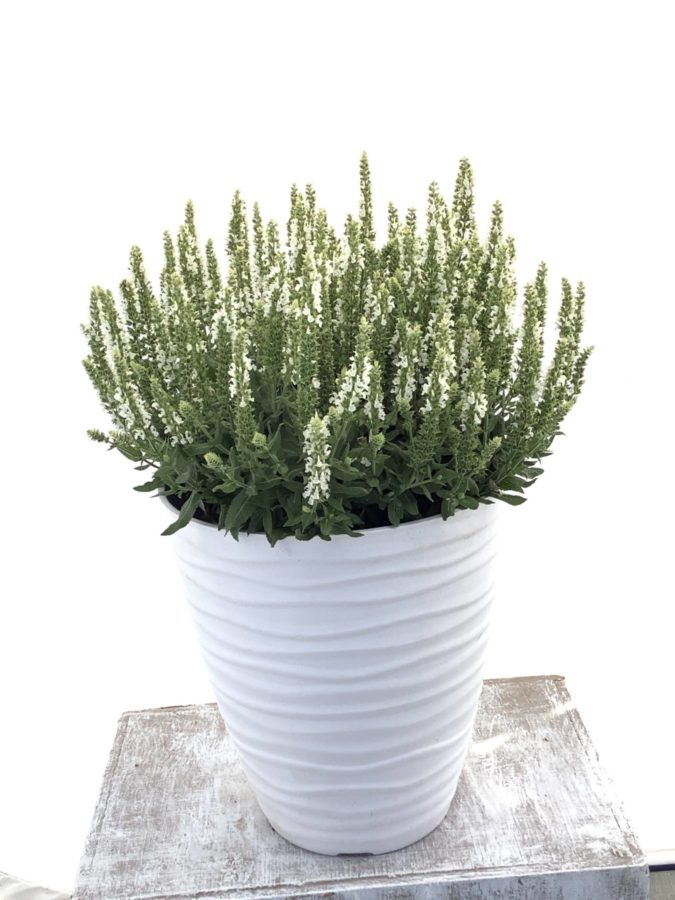
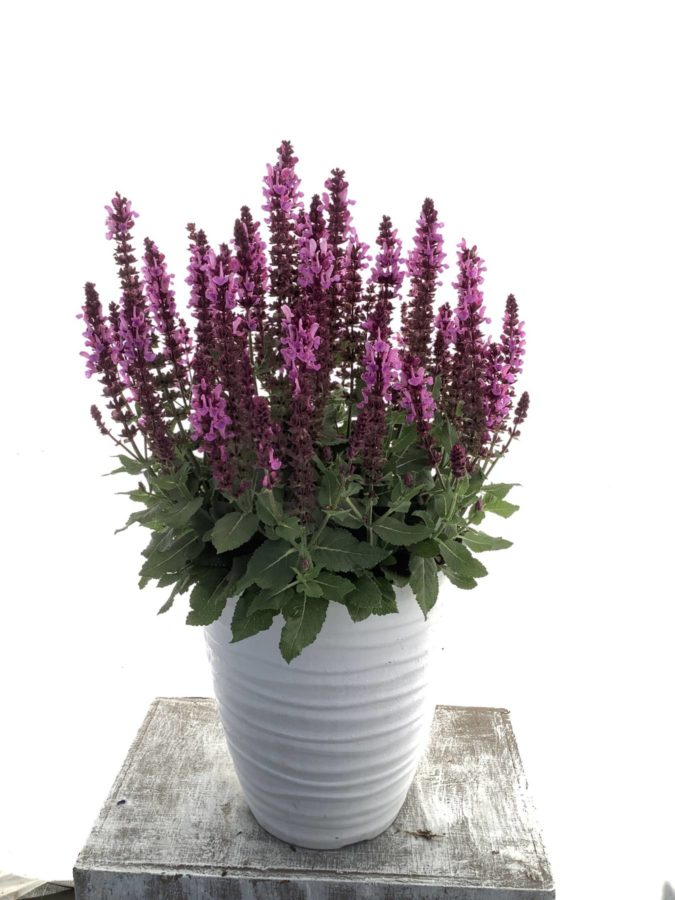
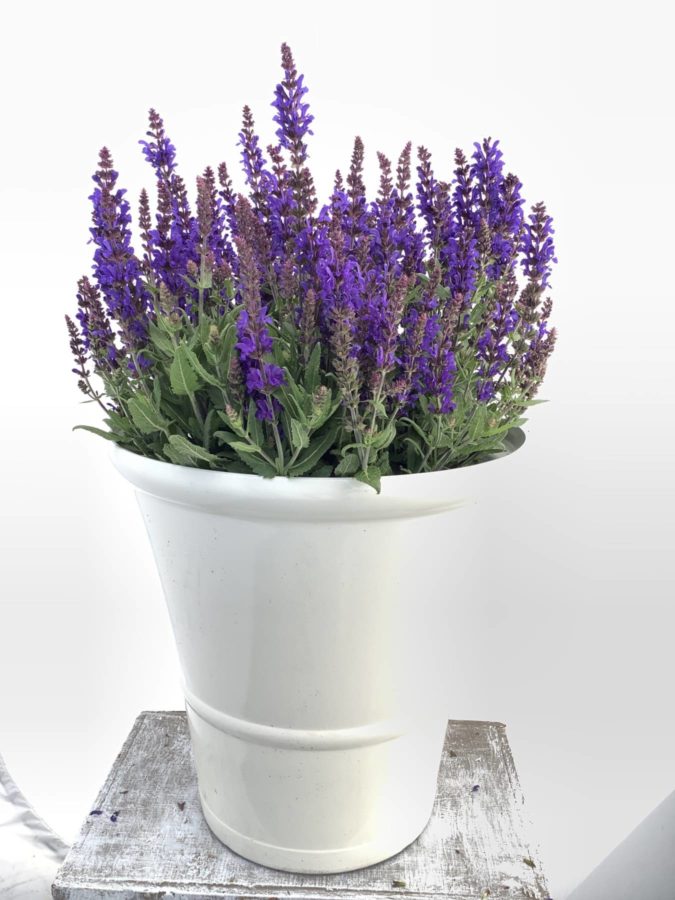
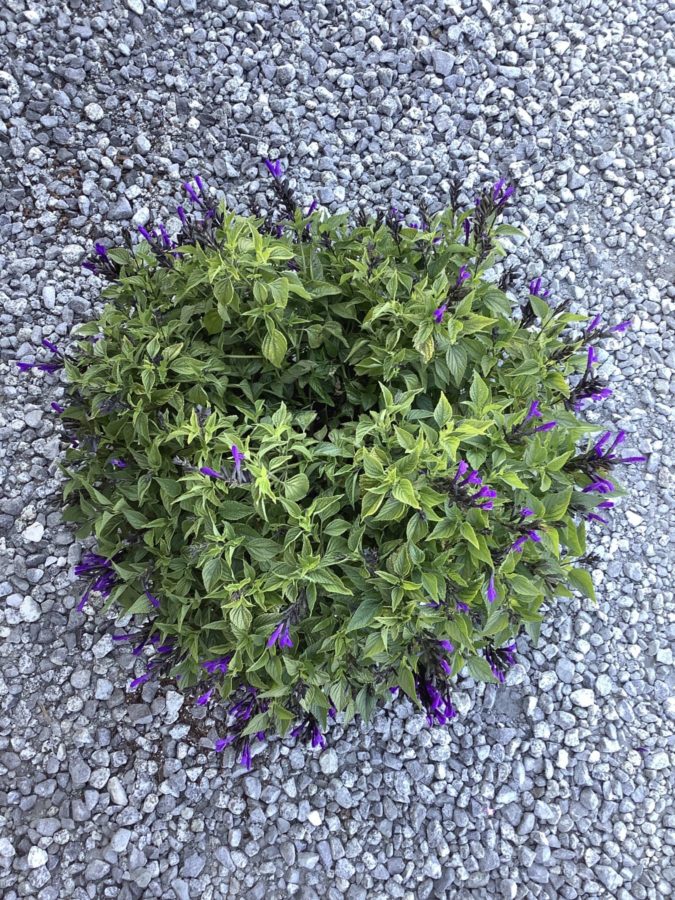

 Video Library
Video Library 




















